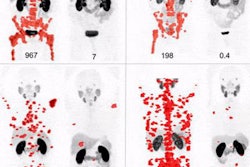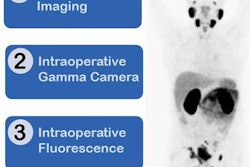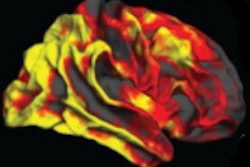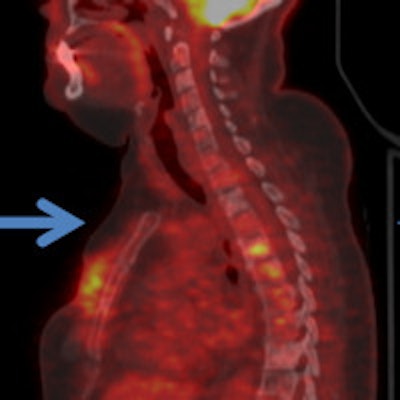
VANCOUVER - An FDG-PET/CT scan illustrating the effectiveness of radium-223 dichloride in treating bone metastases in breast cancer patients with bone-dominant disease has been selected as the Image of the Year at the Society of Nuclear Medicine and Molecular Imaging (SNMMI) annual meeting.
The images come from the department of nuclear medicine at the Institut Jules Bordet in Brussels and were selected from more than 2,000 studies. The research is scheduled for presentation on Wednesday by lead author Dr. Patrick Flamen.
In making the announcement, Dr. Peter Herscovitch, chair of SNMMI's scientific program committee, said the image "shows the results of molecular imaging therapy and shows how molecular imaging with FDG-PET can be used to show the response of tumors to therapy."
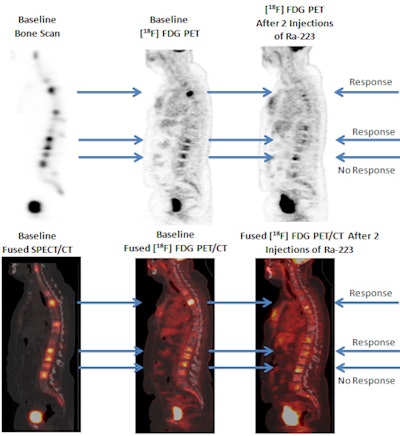 Images obtained after two injections of radium-223 dichloride show a significant decrease in FDG uptake in multiple bone metastases located in the thoracic and lumbar spine, indicating a partial metabolic treatment response at the level of the tumor cells. Images courtesy of SNMMI.
Images obtained after two injections of radium-223 dichloride show a significant decrease in FDG uptake in multiple bone metastases located in the thoracic and lumbar spine, indicating a partial metabolic treatment response at the level of the tumor cells. Images courtesy of SNMMI.Radium-223 is designed to target bone metastases with high-energy alpha particles and spare healthy tissue and bone marrow. The radiopharmaceutical was recently cleared by the U.S. Food and Drug Administration (FDA) for the treatment of castration-resistant prostate cancer with bone metastases.
In this study, Flamen and colleagues evaluated 23 metastatic breast cancer patients with a total of 155 lesions after treatment with radium-223 dichloride. All 23 patients received at least two treatments, while 15 women received three treatments and 19 received four treatments.
To assess metabolic changes in target bone lesions, FDG-PET/CT scans were performed at baseline, after the second round of therapy, and after the end of treatment.
After two treatments with radium-223 dichloride, 32% of the target lesions decreased significantly. Patients who received four treatments had a 41% response rate for target lesions. Most of the other analyzed target lesions remained stable.
"One of the powers of molecular imaging with FDG is one often sees a biological tumor response in terms of decreased FDG uptake and decreased tumor metabolism before one can detect tumor response with anatomic imaging modalities, such as CT or MR," Herscovitch said.
The images show the potential for radium-223 dichloride to be used in patients with other types of metastatic cancer beyond the prostate, he added.




